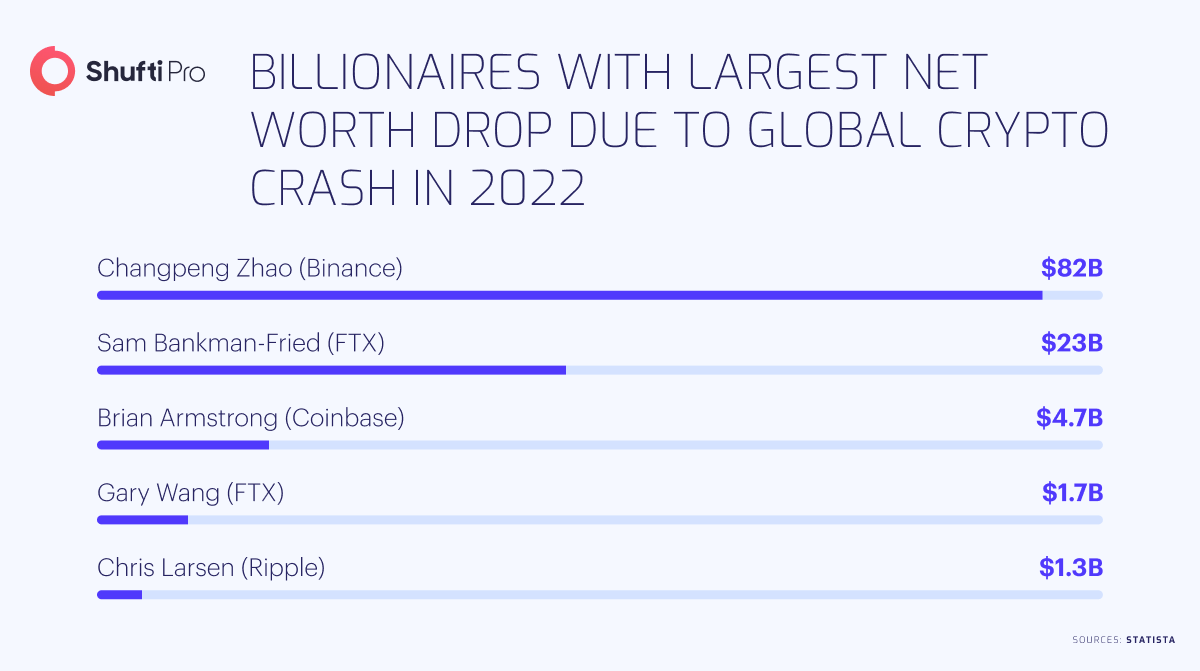The Dark Side of Digital Wallets and the Role of Crypto Monitoring

Cybercriminals have recently exhibited a keen interest in crypto theft, in some circumstances going to the extremity of entering fake relationships to deceive a partner into fake investments.
According to a 2022 report by the Federal Trade Commission (FTC), roughly $139 million was lost in 2021 as a result of crypto romance fraud— one of the many scams happening in the crypto market. Furthermore, more than 46,000 customers reported losing over $1 billion to crypto sams from Jan 1, 2021 to March 31, 2022; the figure is substantially higher than this but is not reflected in stats or reports due to not all cases being reported.
What Cryptocurrencies are Most at Risk?
As per the Fintech Times, Binance Smart Chain (BSC) witnessed a surge in thefts, with the cryptocurrency being pocketed 50 times in 2022. Ethereum (ETH) was the second most stolen coin in the previous year, being lost 33 times. The most stolen coin since 2021 is Bitcoin (BTC), being stolen in 94 crypto-related scams.
Billionaires with Largest Net Worth Drop Due to Global Crypto Crash in 2022
Binance Founder and CEO Changpeng Zhao suffered the greatest monetary loss of $82 billion following the cryptocurrency crisis of 2022. Binance founder was followed by FTX founder and CEO Sam Bankman-Fried, who lost $23 billion.
Bankman-Fried was apprehended on December 12, 2022, over securities scam, money laundering, wire fraud, and a plot to defraud the US. FTX, which was the fourth largest crypto exchange worldwide, filed for bankruptcy over a liquidity crisis in 2022. This occurred after it attempted to market a significant portion of its operating business to its competitor, Binance.
The Securities and Exchange Commission (SEC) of the US has charged Bankman-Fried with devising a fraudulent scheme to trick investors. The charges were made amid reports highlighting that the former FTX chief diverted funds of customers to his Alameda Research hedge fund. However, Bankman-Fried denied all the wrongdoings and said that he was unaware of Alameda Research utilising FTX client funds.

Red Flags to Watch Out for
Here are some of the common signs of money laundering in the crypto sector:
- Transactional Behaviour: Unusual patterns of crypto transactions, like a huge number of transactions in a short time or fast deposit and withdrawal of cash through a recently opened bank account.
- Geographical Risks: Transactions involving cryptocurrency transfers to or from countries deemed as high-risk. It involves sending currency for exchange to a country different from the client’s residence.
- Structured Transactions: A number of cryptocurrency transactions structured in amounts to avoid triggering reporting thresholds.
- Anonymous Transactions: Scammers seeking to take benefit from the anonymity of cryptocurrency use privacy coins or proxies to make illegal transactions. They can also attempt to anonymously control several cryptocurrency wallets via a single IP address.
- Inefficient CDD: Transactions that involve accounts with inefficient Customer Due Diligence (CDD) or involving clients that haven’t provided their details.
- Money-mulling: Money launderers may use financially vulnerable clients or those unfamiliar with crypto as money mules to conduct transactions on their behalf.
The Need for Transaction Monitoring in Cryptocurrency Firms
The crypto sector has enjoyed a certain degree of autonomy since its inception. However, the trend has changed recently as governments have introduced stringent regulations to manage the sector.
In fact, crypto firms are now regulated the same way as financial institutions. In case, individuals and businesses who do not fulfil crypto transaction monitoring regulations will face the risk of prosecution over non-compliance.
Here are the penalties and other consequences that the crypto sector may encounter:
- Heavy Compliance Fines: Not abiding by regulations will charge them heavy monetary penalties.
- Legal Issues with Regulatory Bodies: They are only charged with a handsome amount over non-compliance but legal battles are another problem leading to a loss of market share.
- Damaged Business Reputation: When customers realise the sector for being fined, it loses respect in the eyes of users, putting a dent in the business’s reputation.
- A Surge in Crypto Fraud: Scammers are always on the hunt for businesses with poor security systems for easier infiltration to perpetrate crimes. Thus, crypto businesses that do not have proper transaction monitoring solutions are at risk of crypto fraud.
How important it is to monitor crypto transactions is obvious from the fines levied by governments for non-compliance with AML regulations. The European Parliament has announced fresh KYC (Know Your Customer) and AML (Anti Money Laundering) checks to monitor crypto transfers in June 2022; US cryptocurrency exchanges now fall under the regulatory framework of the Bank Secrecy Act (BSA).
According to Bloomberg, the investment and stock trading app Robinhood which processes about 100,000 daily transactions, is charged with a monetary penalty. The New York State Department of Financial Services has fined the company a $30 million fine over violating AML and other cyber-security regulations.
No matter in which country or jurisdiction a crypto firm is operating, the above penalties and consequences may be faced by companies that do not deploy crypto transaction monitoring solutions.
How Shufti Helps Crypto Firms With Transaction Monitoring
Shufti offers an AML transaction monitoring solution that screens customers against 1700+ global AML watchlists within seconds. Shufti’s AML solution helps crypto firms understand customer behaviour, reduce fraud rates, and stay compliant with the ever-evolving regulations.
Want to know more about how an AML transaction monitoring solution work?










